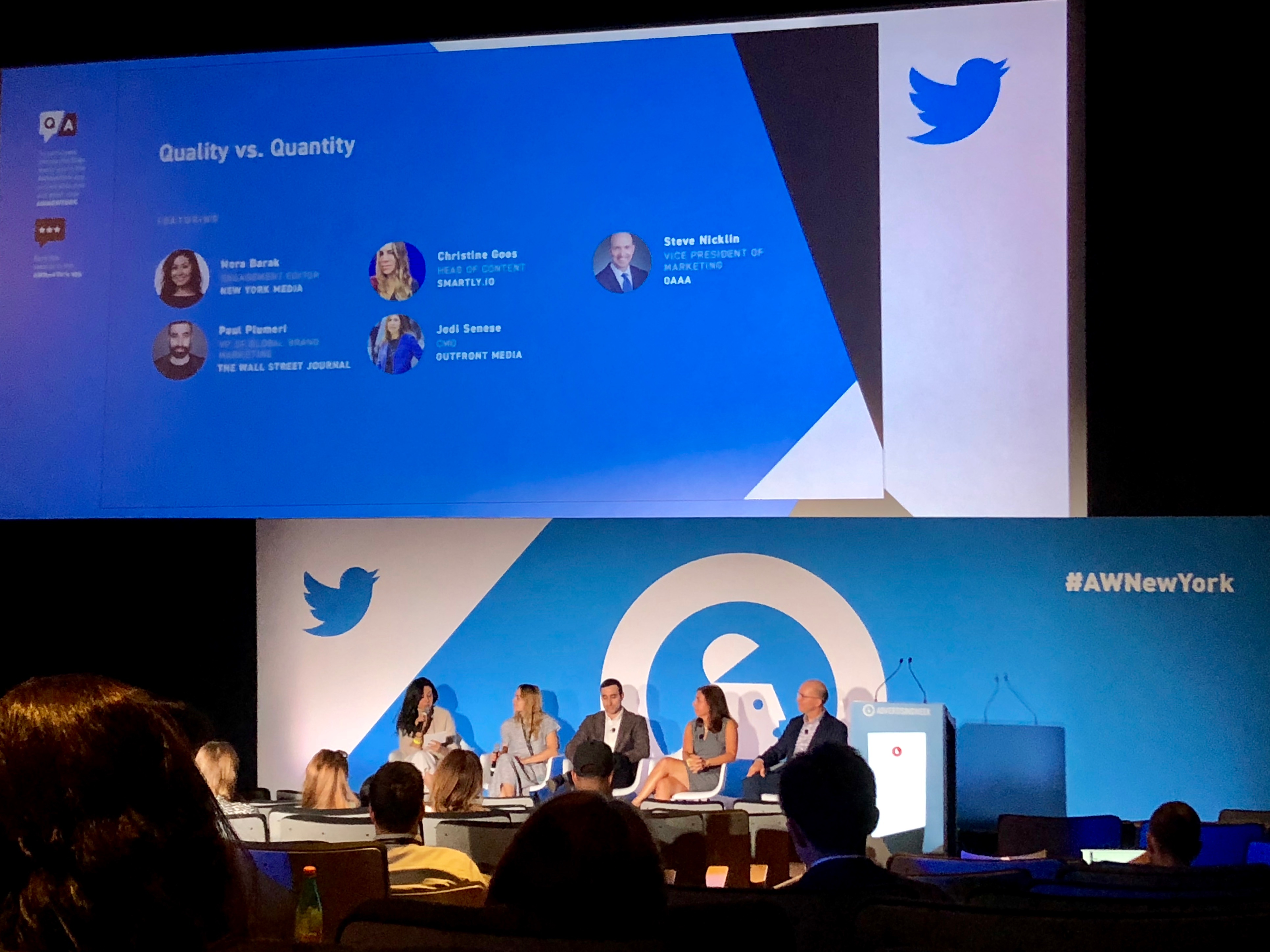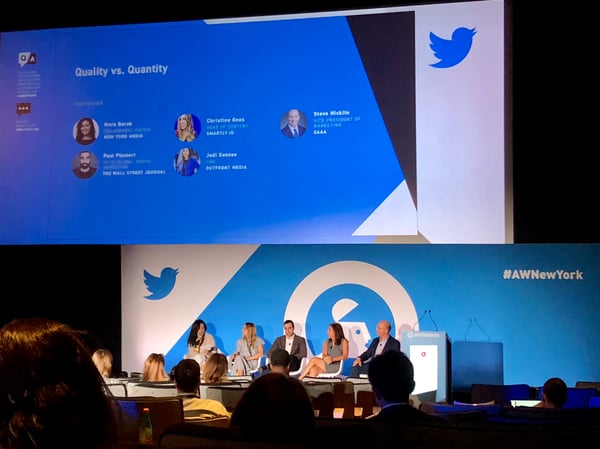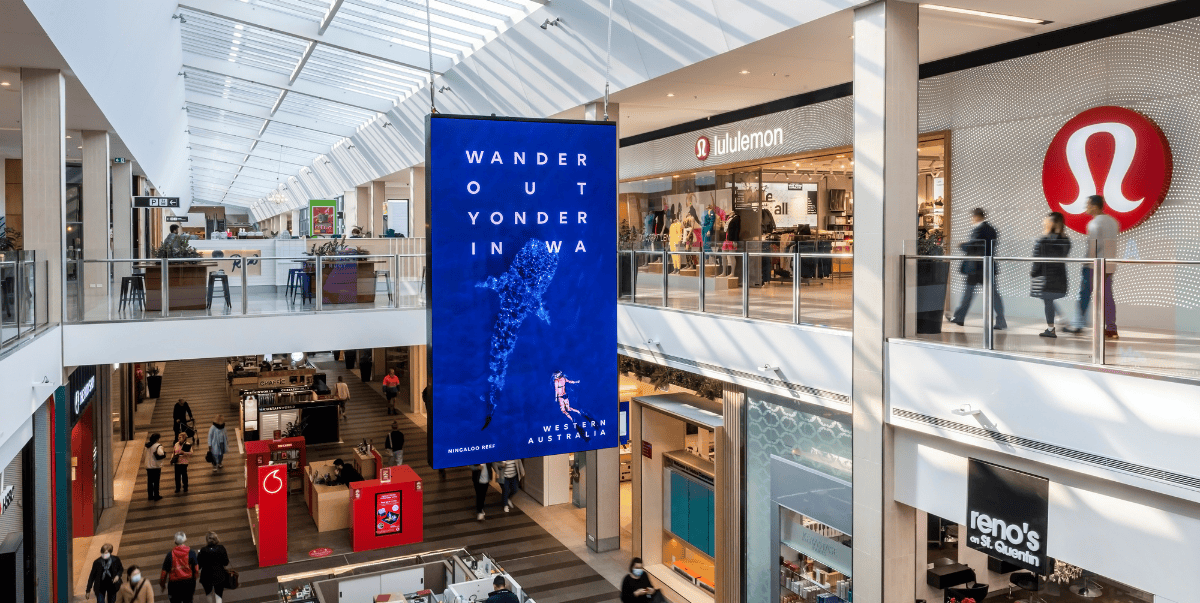

As digital out-of-home continues its trajectory as the fastest growing marketing channel, it has also emerged as a prime topic of discussion at Advertising Week. At last week’s conference, a number of sessions featured industry leaders across out-of-home, including our friends at Adspace, Captivate, Clear Channel Outdoor, GSTV and OUTFRONT Media, as well as the DPAA and OAAA. In case you missed it, we’re sharing some of our key takeaways.
Innovations in (Digital) Out-of-Home
In what was once simply known as the oldest form of advertising, the innovation potential for out-of-home—from the usage of mobile, first- and third-party data, to programmatic, to weather-triggering, to visual detection—has just begun to take off. The capabilities of digital out-of-home are being embraced by a multitude of brands, like REI and Toyota, to great success, but many brands are still hesitant to invest in a marketing channel they know little about.
We agree that brands can be smarter about their digital out-of-home strategies, by using it to connect with the right consumers, at the right place and the right time. We also want to help educate buyers to know how to best leverage screens with not just static creative, but dynamic, video, audio, and interactive components. For example, Greg Glenday, CEO of Adspace, shared that some of the best uses of their digital mall inventory are by clients who, “build creative that’s meant to be on those screens.”
When it comes to a network like GSTV, their screens were once viewed as content simply made for a captive audience. Yet that frame of thought hasn’t stopped them from improving the quality of their content and the breadth of their partnerships. According to President and CEO of GSTV, Sean McCaffrey, “we need to bring best-in-class content to our engagement experience.”
As Glenday summarized, one of the greatest reasons to invest in digital out-of-home is because it lacks the intrusive quality that most advertising has—DOOH offers a “non-intrusive, passive ad on a beautiful canvas.”
Programmatic for the People
The programmatic landscape is starting to expand and is no longer just an auction for display and pre-roll video. With players like Vistar in DOOH and others across mobile and other marketing channels, programmatic is continuing to change how advertising is bought and sold. However, as highlighted by Charlie Neer, VP of Revenue at MiQ, many agencies and brands are under-resourced, whether that means not having the background in what is available, or not having in-house staff to handle programmatic buying across different platforms.
At Vistar, we offer a variety of buying mechanisms for our agency and brands to leverage. By taking the confusion out of programmatic, we’ve been able to provide buyers a programmatic auction platform, the Vistar Ad Exchange, and a private marketplace for seller-curated inventory, Deals Discovery.
Omnichannel Strategy in a Fragmented World

Brands that want to become a meaningful part of the consumer journey should understand that you need to reach people at multiple touchpoints. When taking an omnichannel approach to marketing, you ensure that all your channels are working together to tell the same story and measure these channels holistically - nothing operates in a silo. By pushing brands to connect their strategies, message and measurement across channels, campaigns will be able to achieve the greatest impact.
While much of this conversation focused on connected TV and display, digital out-of-home is another critical component of the omnichannel mix. Including DOOH allows marketers to reach people at the touchpoints where other forms of media - including connected TV, display, TV, radio, and print - are not in the view of consumers.
Quality vs. Quantity
When you think about amplification, “quality over quantity gets you there with out-of-home,” according to Jodi Senese, CMO of OUTFRONT Media. More and more, agencies and brands are looking at content from the perspective of dwell time and other more nuanced metrics.
Out-of-home provides the strongest case for real-world dwell time because consumers viewing these screens are often going about their daily activities or are a captive audience, standing or sitting in a particular place for an extended period of time. To capture the attention of this audience, campaign creative needs stopping power, readability, and simplicity. Additionally, OOH benefits from the opportunity to target by location. As Steve Nicklin, Vice President of Marketing at OAAA explained, “Out-of-home becomes a stake in the ground that is either at or very near the point of sale.”
Ultimately, out-of-home’s greatest strength is being able to bridge the gap between IRL and URL. After someone views an OOH ad, she or he can immediately activate on mobile through search and social tags. There is also the potential for location-based cross-screen. Vistar Media uses geospatial data analysis to retarget consumers exposed to OOH on mobile, again reaching consumers while they are on the go.
Interested in learning more about digital out-of-home? Download Vistar’s comprehensive guide.



